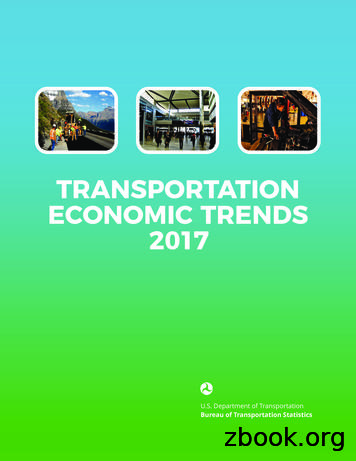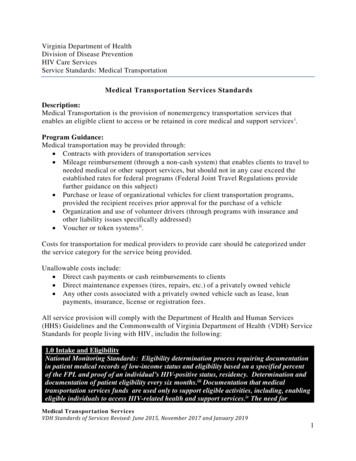Getting There Including Transportation In A Future Plan
Welcome to today’s panel! First time using Webex? –You can communicate with other attendees or the host in the Chat Box and seek technical assistance if needed. –You can type questions about the material presented in the Q&A section. Today’s webinar will be recorded and shared publicly. Please keep this in mind when sharing information and experiences during the webinar.
Getting There: Including Transportation in a Future Plan Robyn Bernardy, Directory of Travel Training for Medical Transportation Management Julie Dupree, Training and Technical Assistance Specialist II for Easter Seals Project Action
Easter Seals Transportation Group Multiple projects focusing on: Accessible transportation for people with disabilities Transportation for older adults Veterans transportation concerns School transition programs and travel skills for students Mobility management
ESPA Consulting Training Webinars Online Courses In-person workshops Questions about events Via phone – (844) 227-3772 Via e-mail – ESPAConsulting@easterseals.com Website– www.projectaction.com
Overview Importance of transportation resource planning Transportation Education Wayfinding Technologies Mobility Management
A Day in the Life Freedom in choice Independent living model philosophy and transportation We need safe, reliable and affordable transportation to access our world
The Power of Data Thirty-one percent (31%) of people with disabilities reportinsufficient transportation compared to 13 percent of the general population (AAPD, 2012) Fifty-percent (50%) of unemployed - barrier to employment. Lack of education or training, & lack of transportation (BLS, 2012). People with disabilities are 40 percent of 15 million in US who have difficulties getting the transportation they need (NCD, 2013). Individuals who ride public transportation instead of driving can save 9,798 annually (APTA, 2013).
Why does Transportation Continue to be a Barrier toward Community Success? Lack of knowledge and skills Individuals with disabilities and/or their families are fearful Teachers/Service Providers are fearful Lack of connections with public transportation Lack of transportation options Inconvenience of transportation options Cost of transportation
Potential Solutions Knowledge Gaps Transportation Education & Travel Instruction Fear Experience Instruction Peer-mentoring Service-learning Limited Connections Limited Services Mobility Management Forums Fairs Coordinated Transportation planning
Transportation Planning Strategies Engage families, students, community service providers, and – hold a transportation summit Invite students who use transit, businesses, Voc Rehab Conduct resource mapping of transportation resources & travel training services – shared services (church, school, business) Contribute to IEP goals around accessible transportation Invite transit professionals into events Offer students service learning opportunities involving transit and transportation Write articles and stories with transportation as a focus
Transportation Planning Strategies Field trips to transportation providers Embed transportation content into curriculum and instruction Integrate transportation content into professional development Understand travel instruction and its components Connect with transit organizations and mobility management systems
Public Transportation: Beyond Buses Fixed Route Transportation Shared Ride Service Bike Share Programs Volunteer Driver Programs Transportation Network Companies Taxi’s
Wayfinding Technologies Mobile Applications Focus on bringing universal and independent mobility to end user Often see in blind/low vision programs Excellent independent travel aide
Wayfinding Technologies Click and Go Maps - Columbia Lighthouse for the Blind, Silver Spring, MD Travel Mate – The Arc of Northern Virginia
Case Study: Alexander
What is Travel Training? Travel training is the “professional activity of teaching individuals how to access their environment and their community and use public transportation independently.” -Association of Transit Instruction
Benefits of Travel Training Individual increases their independence Family obtains another mode of transportation Public transit agency increases their ridership Community gains a member
Types of Travel Training One-on-one travel training Individualized Route-specific Not time-limited Group travel training
Travel Training Process Assessment Trip planning preparation Travel training!! Travel training completion Follow-up
Process Details: Trip Planning Route and scout Creating tools that will help the learning process Green Line Fort Totten Georgia AvePetworth Columbia Heights U Street Shaw-Howard U Mt. Vernon Square Gallery Place Archives L’Enfant Plaza
Process Details Person-centered Continual assessment of skills Thorough documentation of progress Updates provided throughout, as needed Travel training is not time limited
Barriers I don’t think they can do it. I’d rather just drive them where they need to go. Aren’t buses dirty? Are buses safe?
Where Can I Find Travel Training? Public transit agencies Center for Independent Living Non-profits Schools
Questions? Please raise your hand and we will call on you OR type your question into the chat box.
Next Webinar Tuesday, December 15th , 2015, 2:00-3:00 PM Eastern Including Social Connections and Recreational Activities in Future Plans If you have any questions, please contact us at futureplanning@thearc.org
Specialist II for Easter Seals Project Action . Easter Seals Transportation Group Multiple projects focusing on: Accessible transportation for people with disabilities Transportation for older adults Veterans transportation concerns School transition programs and .
Transportation Engineering The transportation engineering faculty offer graduate course in transportation planning, design, operations and safety with an emphasis on surface transportation. The faculty are engaged in research in transportation planning and safety, intelligent transportation systems, transportation systems analysis, traffic flow .
fee basis. Airlines, railroads, transit agencies, common carrier trucking companies, and pipelines are examples of for-hire transportation. Other types of transportation are discussed in Chapter 2. Box 1-1: Transportation Services Index The Bureau of Transportation Statistics’ (BTS) Transportation Services Index (TSI) measures the
Transportation's contribution to the economy can be measured by its contribution to gross domestic product (GDP). GDP is an economic measure of all goods and services produced . Source: U.S. Department of Transportation, Bureau of Transportation Statistics, 2017. Transportation-Related Final Demand by GDP Component Figure 2-1 shows total .
The overall goals of asset management are to minimize long-term costs, extend the life of the transportation system, and improve the transportation system's performance. The Iowa Department of Transportation's (DOT's) guiding principles for transportation asset management are the following: Asset management is policy driven.
Transportation Services Direct Transportation Providers deliver non-emergency transportation services that enable an eligible client to access or be retained in core medical and support services. Clients are provided with information on transportation services and instructions on how to access the services. General transportation procedures:
transportation (i.e., self, fixed route, friend, relative). In order to provide "Medicaid Transportation", Medicaid contracts with the Commission for the Transportation Disadvantaged, who in turns contracts with a single a transportation entity in each county. In most counties, that provider is the CTC. Medicaid requires its transportation
2.7 CATS Survey of Transportation Services in Mecklenburg County A community transportation survey was also designed and used in 2008 to develop an inventory of transportation services in the county, identify perspectives about transportation needs, and capture interest in transportation coordination. The survey was sent to approximately 500
mercedes a 180 free workshop and repair manuals mercedes a 180 the mercedes-benz a-class is a compact car produced by the german automobile manufacturer mercedes-benz. the first generation (w168) was introduced in 1997, the second generation model (w169) appeared in late 2004, and the third generation model (w176) was launched in 2012. mercedes-benz 180 service manual pdf download manualslib .























